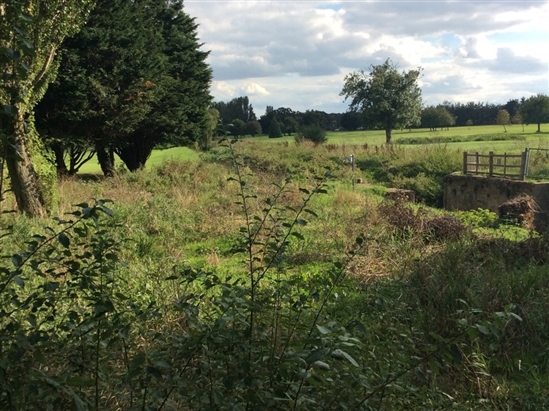The Battle
The chronicles are signally unhelpful on how the armies deployed, apart from placing the battle in marshy ground, close to the church of Fornham St Genevieve. This implies that Leicester had little choice as to where to fight, although he would have tried to draw up his men on the higher ground to the north of the church, rather than in the water meadows down by the river.
Royalist deployments have been plausibly placed both to the southeast of Leicester’s army, having sallied from Bury after Leicester had passed, and to the northwest, cutting him off from further progress without a battle. In fact, it is not implausible that there is an element of truth in both propositions. The royalist army came from a number of locations, and de Lucy and de Bohun’s men, having hastened down from Scotland, may have arrived in the vicinity after the bulk of the locals were already mustered. Indeed, Roger of Hoveden, in writing of the Royalist forces describe them as “the earls, with a considerable force, and Humphrey de Bohun, with 300 knights, soldiers of the King”. This may imply that the two forces were separate, in which case the knights of de Bohun may have approached from the north-west. A divided royalist deployment might also explain the rather cryptic description in William of Newburgh of Leicester’s dilemma “but they, being unable to deviate either to the right or to the left………. boldly pressed forward with a well-arranged squadron of cavalry”.
The battle appears to have been brief and bloody, followed by a lethal pursuit. Accounts suggest an initial attack by Leicester, followed by (or coinciding with) one or two attacks by the royalists. The accounts are more concerned recording the deeds of derring-do of the principal participants than describing the tactical details, but it seems that the royalist knights quickly disposed of Leicester’s outnumbered horsemen, and then knocked down the infantry, leaving the foot soldiers and peasants. ‘to destroy the Flemings with fork and flail………three thousand Flemings or more were slaughtered and perished.”
As the rebels ran, they were impeded by the number of ditches and the marshy nature of the ground and cut down where they stood. Petronilla, Leicester’s wife, who turned up for battle fully armoured in mail and equipped with shield and lance, fell into a ditch, lost her rings, and was pulled out by Simon of Odell with the words, according to Jordan Fantosme, “My Lady, come away from this place, and abandon your design! War is all a question of losing and winning”. Leicester surrendered soon afterwards. It appears that the entire rebel army was either killed or captured.
Fornham St Genevieve was the only significant action in the open field fought in England during the war between Henry and his rebellious sons. The decisiveness of the victory ensured Henry’s ultimate success, a defeat would likely have substantially weakened his position, and could have changed subsequent history substantially. Tactically it appears to be a triumph of the mounted knight over mercenary infantry, and is remarkable for the almost complete destruction of the rebel army, something which can probably be explained by a combination of the nature of the terrain, and the hatred of the locals for foreign invaders. Gervase of Canterbury perhaps expresses this hatred best “three thousand Flemings or more were slaughtered and perished. Serve them right!”






